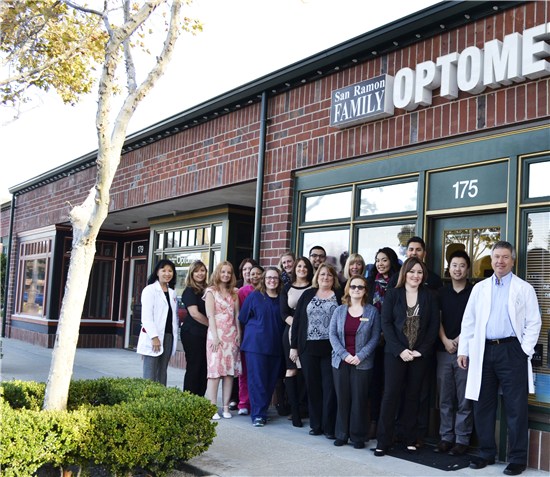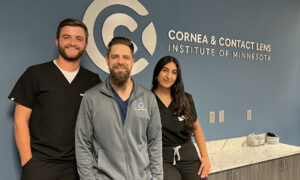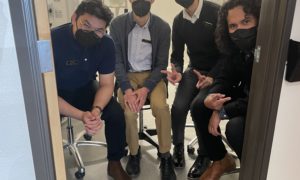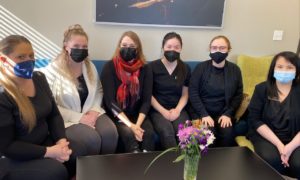Beverly Jue-Smith, OD, MBA
February 18, 2015
SYNOPSIS
Effective training equips a new hire to contribute to practice growth goals–right from the start. Good hiring techniques + good training programs = win-win.
ACTION POINTS
KEEP ON TASK. Set a training task list and keep the new hire on target.
ESTABLISH TRAINING PERIOD. Evaluate regularly to see if new hire is a keeper.
MAKE TRAINING CONTINUOUSCombine offline and online seminars with job shadowing and on-the-job aids.
Hiring a new employee provides you with a great opportunity to grow your practice. When that employee succeeds, your practice succeeds. But when the hire does not fit in or perform well, your practice can experience a majordrain on profits. Effective and ongoing staff training can be the critical factor in helping that new hire–and your practice–to make it a win-win.
The training you provide will determine each employee’s success in exceeding your patients’ expectations. Regardless of how well prepared the new hire is, they will still need to be schooled in how your practice operates, and how they can fulfill the practice’s goals. The quality of the staff is a direct reflection of how well they are trained, and that reflects on the quality of care your practice delivers, which in turn, affects your practice’s growth.

The staff of Dr. Jue-Smith’s practice, posing outside the office. Dr. Jue-Smith advises creating a structured training program for each new hire.
Over the years, we’ve grown to be a large practice with five ODs and a staff of 14, including three specific managers. Our new hires are “assigned” to a principle trainer for their first three months. The trainer is usually the department manager, but occasionally it is another team member in that department.
The trainer is responsible for following a training task list and keeping the new hire on task during their workday. The new hire is also encouraged to ask any other team member questions, but they are asked to mainly shadow their trainer each day, especially during the first month.
Usually our successful new hires are asked to switch places with their trainer once they have mastered each specific task so their trainer can “test” them to ensure they can successfully interact with and help real patients before they move on.
Create Supportive Environment for New Hire
Our staff is exceptional when it comes to welcoming new hires. Everyone knows what it feels like to be the new kid on the block and they go out of their way to welcome new hires. They often invite them to lunch, and have plenty of time to get to know them during the day. Since we spend so much time with each other each day, I believe it is important to maintain a fun, cooperative and friendly work environment. I also make sure each staff member and doctor is personally introduced to the new hire. I highly respect the opinions of my staff. I consider them my eyes and ears when I am in the exam room, and often ask them how the new hire is doing–I don’t just rely on reports from the trainer. Everyone wants a smooth-running work environment, so everyone knows how important it is that each new hire is a good fit.
Establish Training Period
Our training period is three months during which I receive a weekly progress report from their trainer. If the new hire is not progressing, we can assess the option to keep them or try to iron out problem areas early. If they progress rapidly we offer them an opportunity to earn a raise in their salary.
I am planning to include a six-month evaluation period in addition to the weekly ones during the first three months of hire. I think more frequent performance evaluations for all staff is important. I know this is time consuming, but more frequent dialog with my staff enables me to have a better, well-trained staff, and hopefully, a happier and better work environment for all.
For example, our new opticians will shadow their trainer for 2-4 weeks, perhaps also shadowing the other opticians to learn different case interaction scenarios. The trainers will ask the new hires questions during this time of observation to ensure the new hire is picking up the information. An example of training on specific tasks is when we ask the new hire what type of frame shape they would select for a certain face shape. The second month of training for the optician involves placing orders and frame selections while the trainer is shadowing them. During this time the trainer will be there at all times to answer questions and help as needed.
By the third month, the new optician should be able to work independently without a trainer shadowing. At this point the new optician may need to ask a few questions or need little help. The trainer checks every job the optician does for the first week or two.If all jobs are done correctly, then only spot checking by the trainer occurs for the remaining part of the third month. All staff positions follow this training scenario. We have found that most new hires are motivated to learn their job quickly in order to obtain a raise in their starting salary.
Work With Other Employees to Evaluate
Since I cannot be in constant contact with the new hire, I rely mostly on the assessment of their trainer and the other team members. I also make a concerted effort to observe as much as possible between patients. I also work with the trainer to make the training list/schedule to ensure everything I would like the new hire to know is included in the manager’s and trainer’s list.
Use Both Formalized and On-the-Job Training
We utilize both formalized and on-the-job training. We ask new hires, as well as seasoned staff, to attend training webinars and sometimes send them to classes in addition to on-the-job training. We also have a Procedures Manual, which we try to make sure each staff member refers to whenever needed, so all staff know there are protocols and procedures to follow for each task.
Offer CE Opportunities to New Hires
We are fortunate to have Primary Eyecare Network (PEN) nearby, and utilize their live classes, in addition to their webinars, which our staff can just log onto during the workday. I also teach two optician training courses online, which my staff is welcome to access. One is an introduction course on optical assisting and the other is an ABO Certification exam prep course. In addition, my staff also has access to courses online provided by Essilor ECP University. I wrote and facilitate some of these courses because I saw a need for staff in all practices to have access to a course that gives a good overview of the profession. I believe strongly in constant learning.
By attending outside seminars and classes with other optometric staff, our employees also feel like part of a professional community that extends far beyond our own office. I think it enhances their self esteem and pride in their work when they can interact with others in the same profession. We send staff to local seminars and have sent staff to national events such as Vision Expo and the California Optometric Association CE events.
Use Vendors to Educate
Frame, lab and contact lens vendors are a wealth of information for new hires. Our vendors have often graciously taken our new hires to lunch to teach them about their products. They also have printed material on their products available, which helps to educate new hires, as well as our patients. I have saved hundreds of articles over the years from professional journals and publications, and have used them during staff training sessions and staff meetings.
Beverly Jue-Smith, OD, MBA, is the owner of San Ramon Family Optometry, Inc., in San Ramon, Calif. Dr. Jue-Smith also is owner of Optometric Consultants, a private practice consulting firm.To contact her: srfoptometry_drb@yahoo.com



























